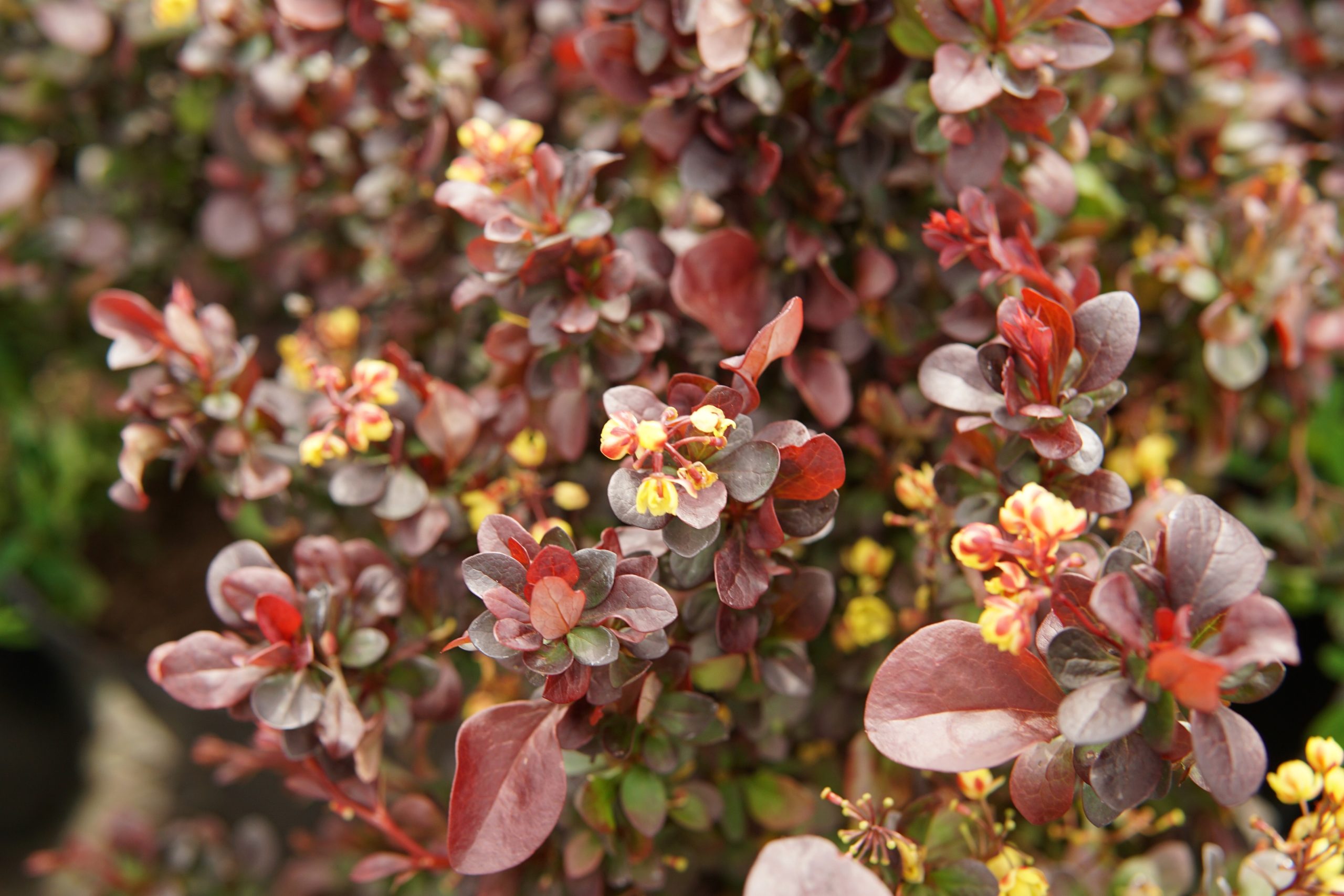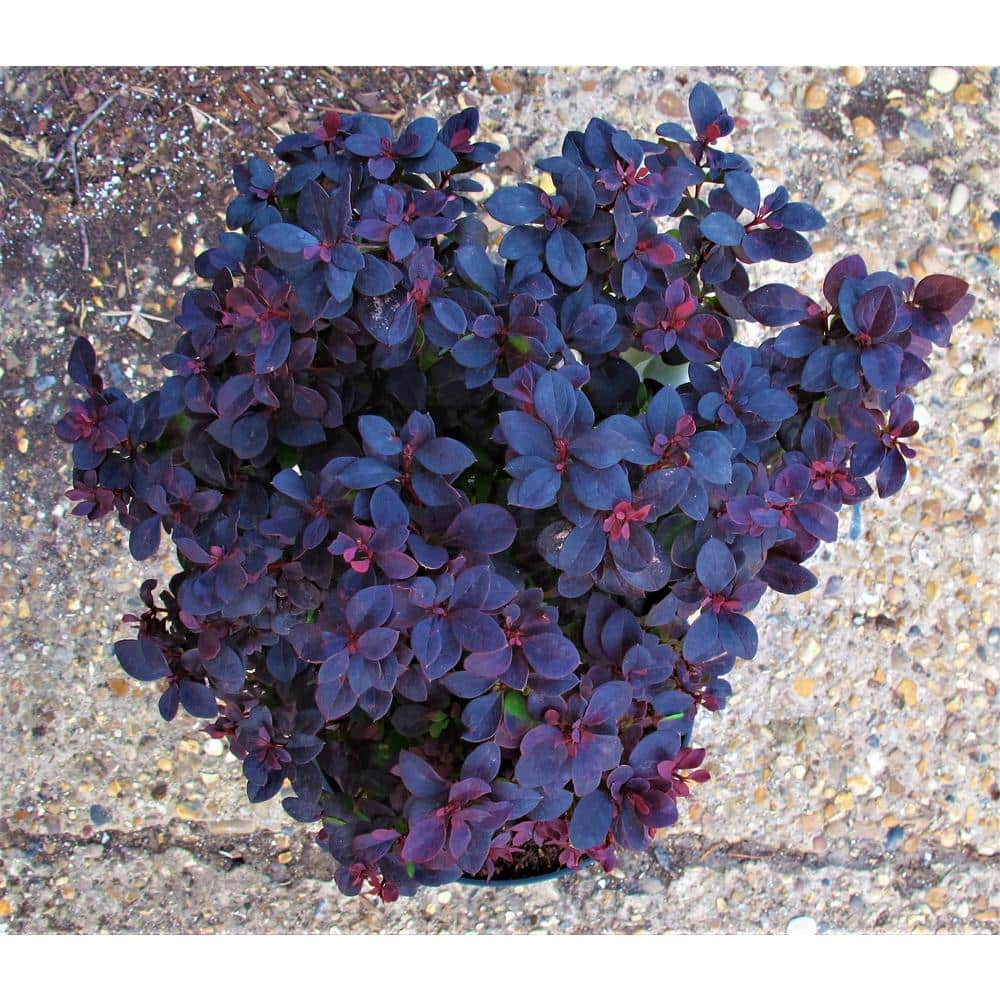Concorde Barberry: The Adjective Shrub For Your Noun Garden
Concorde Barberry: The Colorful Shrub for Your Small Garden
Concorde barberry is a small, deciduous shrub with dark purple foliage that makes a stunning addition to any garden. It is known for its compact size, easy care, and vibrant color, making it a popular choice for both homeowners and landscapers.
In this blog post, we will discuss the key features of Concorde barberry, as well as its benefits and drawbacks. We will also provide some tips on how to plant, care for, and prune this versatile shrub.
What is Concorde Barberry?
Concorde barberry (Berberis thunbergii 'Concorde') is a variety of Japanese barberry that was first introduced in 1969. It is a compact shrub that typically grows to be 2-3 feet tall and wide. The leaves are oval-shaped and have a deep purple color that becomes even more intense in the fall. Concorde barberry produces small, yellow flowers in the spring, which are followed by red berries. However, the berries are not viable and do not produce new plants.
Why Choose Concorde Barberry?
There are many reasons to choose Concorde barberry for your garden. Here are just a few of its benefits:
- Compact size: Concorde barberry is a small shrub that is perfect for small gardens or containers. It can also be used as an edging plant or to create a privacy hedge.
- Easy care: Concorde barberry is a relatively low-maintenance shrub. It is drought-tolerant and can withstand a wide range of soil conditions. It also has good resistance to pests and diseases.
- Vibrant color: Concorde barberry's dark purple foliage is a striking addition to any garden. The color is especially vibrant in the fall, when the leaves turn a deep red.
- Variety of uses: Concorde barberry can be used in a variety of ways in the garden. It can be used as an accent plant, a hedge, or a border. It can also be planted in containers or used as a groundcover.
Drawbacks of Concorde Barberry
While Concorde barberry has many advantages, there are a few drawbacks to consider as well. Here are a few things to keep in mind:
- Thorns: Concorde barberry has small thorns that can be sharp. If you have small children or pets, you may want to choose a different type of shrub.
- Invasive: Some varieties of barberry are considered invasive in some areas. If you are unsure about the invasiveness of Concorde barberry in your area, it is best to check with your local nursery or garden center.
- Pollen: Concorde barberry can be a source of pollen for people with allergies. If you are allergic to pollen, you may want to choose a different type of shrub.
Planting Concorde Barberry
Concorde barberry can be planted in the spring or fall. Choose a location that receives full sun or partial shade. The soil should be well-drained. Dig a hole that is twice as wide and deep as the root ball of the shrub. Add some compost or other organic matter to the soil at the bottom of the hole. Place the shrub in the hole and backfill with soil. Water the shrub thoroughly.
Caring for Concorde Barberry
Concorde barberry is a relatively low-maintenance shrub. It needs to be watered regularly, especially during the first year after planting. Once the shrub is established, it can tolerate some drought. Fertilize the shrub in the spring with a balanced fertilizer. Prune the shrub in the spring to remove dead or damaged branches. You can also prune the shrub to shape it or to keep it in bounds.
Conclusion
Concorde barberry is a beautiful and versatile shrub that can add a touch of color and interest to any garden. It is easy to care for and can tolerate a variety of conditions. If you are looking for a small, colorful shrub for your garden, Concorde barberry is a great option.
The Concorde barberry is a beautiful and versatile shrub that can add color and interest to any landscape. It is known for its deep purple foliage that turns bright red in the fall. The Concorde barberry is also relatively low-maintenance and drought-tolerant, making it a good choice for busy gardeners.
If you are interested in learning more about the Concorde barberry, please visit Home Gardening. This website provides detailed information about the plant's care, planting, and propagation. You can also find photos and videos of the Concorde barberry in its various stages of growth.
FAQ of concorde barberry
What is Concorde barberry?
Concorde barberry is a deciduous shrub that is native to Japan. It is known for its deep purple foliage, which emerges red in spring and turns scarlet in fall. Concorde barberry also produces small, yellow flowers in spring and showy scarlet berries in fall. It is a relatively low-maintenance shrub that is tolerant of a wide range of growing conditions.
How to plant Concorde barberry?
Concorde barberry can be planted in spring or fall. Choose a sunny location with well-drained soil. Dig a hole that is twice as wide and as deep as the root ball of the plant. Backfill the hole with soil, tamping it down firmly. Water the plant thoroughly and apply a layer of mulch around the base.
How to care for Concorde barberry?
Concorde barberry is a low-maintenance shrub. Water it regularly during the first growing season, but it should be able to withstand drought once it is established. Fertilize it in spring with a balanced fertilizer. Prune it in late winter or early spring to remove any dead, damaged, or diseased branches.
Is Concorde barberry invasive?
Concorde barberry is not considered to be an invasive species. However, it can be aggressive and spread quickly if not properly controlled. If you are concerned about the potential for Concorde barberry to become invasive, you can plant it in a container or in a location where it cannot spread to other areas.
How to propagate Concorde barberry?
Concorde barberry can be propagated by cuttings. In late summer or early fall, take 4-6 inch cuttings from healthy, fully-ripened wood. Remove the leaves from the bottom half of the cutting and dip the cut end in rooting hormone. Plant the cuttings in a well-drained potting mix and keep the mix moist. The cuttings should root in 4-6 weeks.
What are the pests and diseases that affect Concorde barberry?
Concorde barberry is susceptible to a few pests and diseases, including aphids, scale insects, and powdery mildew. Aphids can be controlled with insecticidal soap or neem oil. Scale insects can be controlled with horticultural oil. Powdery mildew can be controlled with a fungicide.
Image of concorde barberry
10 different images of concorde barberry that are free to use:
- Concorde barberry shrub in full bloom. The shrub has bright orange-red flowers and dark green leaves.
- Close-up of concorde barberry flowers. The flowers are small and trumpet-shaped, with a yellow center.

- Concorde barberry shrub in fall. The leaves of the shrub turn a brilliant red in fall.

- Concorde barberry shrub as a hedge. The shrub can be used as a hedge, as it grows to be about 2-3 feet tall.

- Concorde barberry shrub in a garden. The shrub can be used in a garden, as it adds color and interest.
- Concorde barberry shrub in a pot. The shrub can also be grown in a pot, as it is relatively small.

- Concorde barberry shrub with berries. The shrub produces red berries in the fall.

- Close-up of concorde barberry berries. The berries are small and round, with a white waxy coating.

- Bird eating concorde barberry berries. The berries are a food source for birds.
- Concorde barberry shrub in a winter landscape. The shrub's leaves turn brown and fall off in the winter, but the stems remain green.

Post a Comment for "Concorde Barberry: The Adjective Shrub For Your Noun Garden"